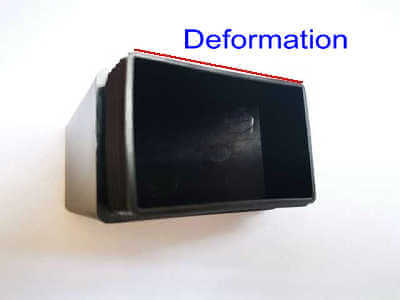Managing Injection Molding Flow Lines: Strategies, Causes, and Solutions
Injection molding is a widely used manufacturing process that involves injecting molten material into a mold cavity to produce complex and precise parts. However, during this process, the formation of flow lines can pose challenges. In this article, we will explore the concept of flow lines in injection molding, their causes, effects, and most importantly, effective strategies to minimize them.
Understanding Flow Lines in Injection Molding
Flow lines are lines or streaks that appear on the surface of molded parts and occur due to variations in the flow of molten material during the injection molding process. Several factors contribute to the formation of flow lines, including material properties, mold design, and process parameters. It is crucial to manage flow lines to ensure optimal part quality and functionality.
Causes and Effects of Flow Lines
- Causes of Flow Lines
Injection speed and pressure, mold temperature, and gate design are significant factors that influence the formation of flow lines. Improper control of these variables can result in flow disruptions, leading to flow lines. Injection speed that is too high can cause material to cool unevenly, resulting in flow lines. Similarly, high mold temperatures may cause premature solidification, leading to flow line formation. Moreover, inadequate gate design can create flow disruptions and generate visible lines on the surface of the part.
- Effects of Flow Lines
Flow lines not only affect the visual appearance of molded parts but also impact their mechanical properties. These lines may create weak points, reducing the overall strength and structural integrity of the part. Additionally, flow lines can compromise the aesthetic appeal of the final product, making it less desirable to end-users.
Strategies to Minimize Flow Lines
Minimizing flow lines requires a comprehensive approach that encompasses process optimization, mold design considerations, and material selection. Here are some effective strategies:
- Optimizing Injection Molding Process Parameters
By carefully controlling injection speed and pressure, you can ensure a smooth and consistent flow of molten material. Adjusting these parameters can help mitigate flow disruptions and minimize the occurrence of flow lines. Furthermore, maintaining precise mold temperature control is crucial in achieving uniform cooling and reducing the formation of flow lines.
- Mold Design Considerations
Thoughtful mold design plays a vital role in managing flow lines. Strategic gate placement allows for proper material flow and minimizes disruptions. Additionally, incorporating venting systems in the mold helps release trapped air and reduce the likelihood of flow lines.
- Material Selection and Modification
Choosing the right material for injection molding can significantly impact the occurrence of flow lines. Flow enhancers can be added to improve the material’s flow characteristics, reducing the likelihood of flow disruptions and lines. Similarly, additives and reinforcements can be utilized to enhance material properties and minimize flow line visibility.
Troubleshooting Flow Lines in Injection Molding
Identifying and troubleshooting flow line issues requires a systematic approach. Careful analysis of the root causes is crucial in implementing appropriate corrective actions. This may involve adjusting process parameters, modifying mold designs, or making changes to the material or additives being used.
Case Studies and Examples
Real-world examples provide valuable insights into the challenges faced and the effectiveness of different solutions in managing flow lines. Through case studies, professionals can learn problem-solving approaches and their outcomes, gaining practical knowledge to tackle similar issues in their own projects.
At Sincere Tech, a leading injection mold manufacturer in China, we recognize the significant role custom injection molding plays in achieving manufacturing excellence. With our extensive expertise in the field, we are proud to offer high-quality custom injection molding services that adhere to the most stringent industry standards.
Our team comprises skilled professionals who are dedicated to delivering exceptional results tailored to your specific needs. Equipped with state-of-the-art equipment and driven by a commitment to innovation, we ensure a seamless and efficient manufacturing process from start to finish.
Right from the initial design phase, we prioritize meticulous attention to detail to guarantee that every product meets your exact specifications. Our experienced engineers work closely with you, offering valuable insights and recommendations to optimize the design for injection molding. This collaborative approach leads to cost-effective solutions without compromising on quality.
We harness the unique properties of plastic materials to create products that boast not only a superior surface finish but also tight tolerances. This not only results in reduced waste rate costs but also contributes to improved energy efficiency and enhances the overall user experience.
No matter your industry or application, our custom injection molding capabilities cater to a wide range of needs. Whether you require consumer goods, automotive components, electrical enclosures, medical devices, or industrial parts, we have the expertise and resources to meet your requirements.
Partner with Sincere Tech China mold maker for your custom injection molding needs and experience the benefits of our exceptional manufacturing capabilities, attention to detail, and commitment to delivering top-quality products that exceed your expectations.
If you have a plastic mold project that is looking for mould suppliers to support you, contact us to get price now.
Conclusion
Managing flow lines in injection molding is essential to ensure high-quality, visually appealing, and mechanically robust parts. By understanding the causes and effects of flow lines, implementing effective strategies, and learning from real-world examples, manufacturers can overcome this challenge and optimize their injection molding processes. By minimizing flow lines, they can enhance product aesthetics, improve performance, and meet the expectations of end-users.
Remember, managing flow lines is an ongoing process that requires continuous evaluation,
